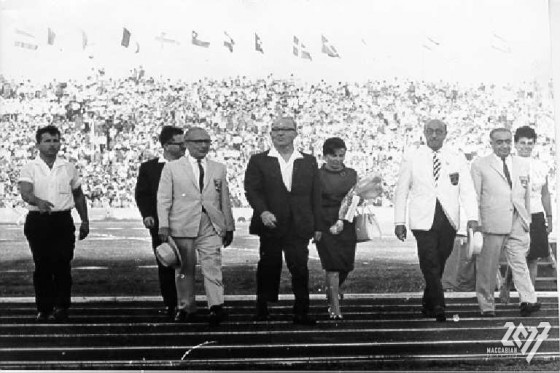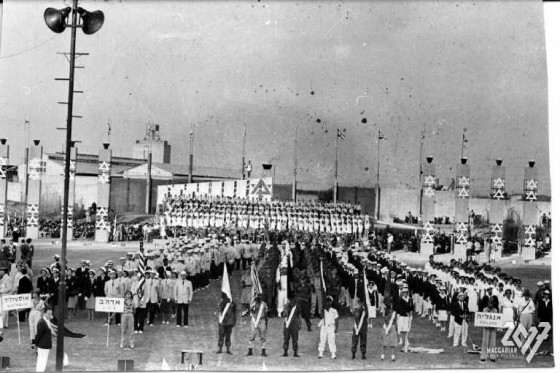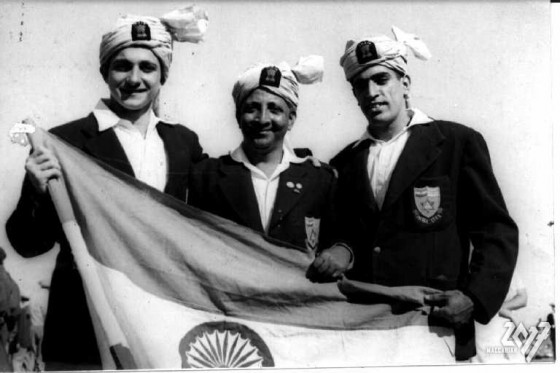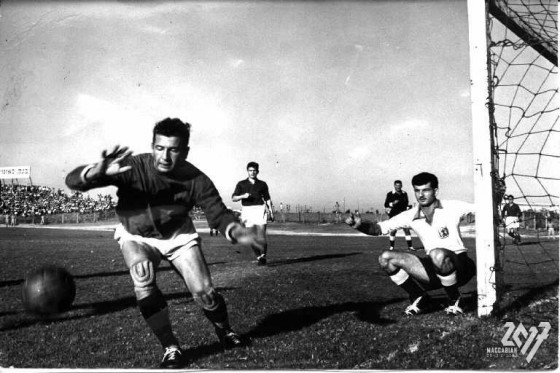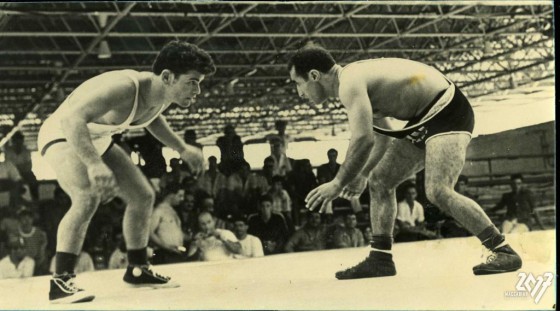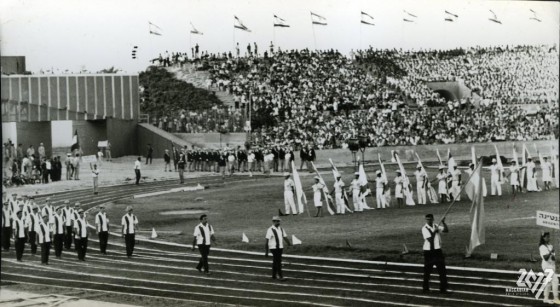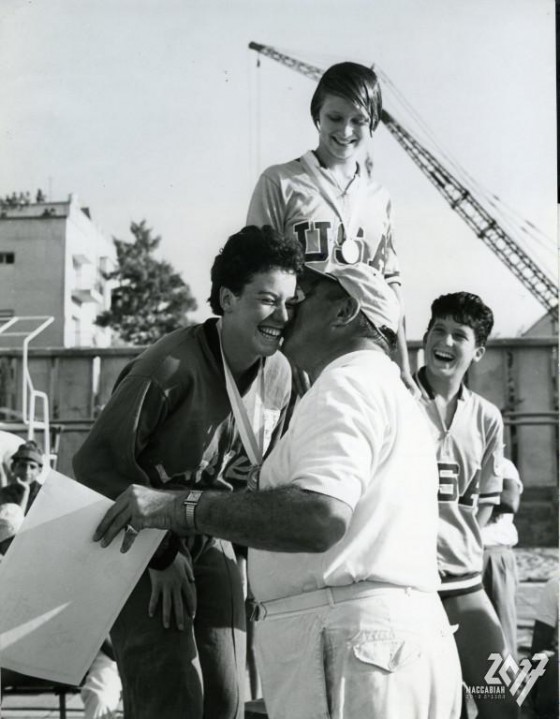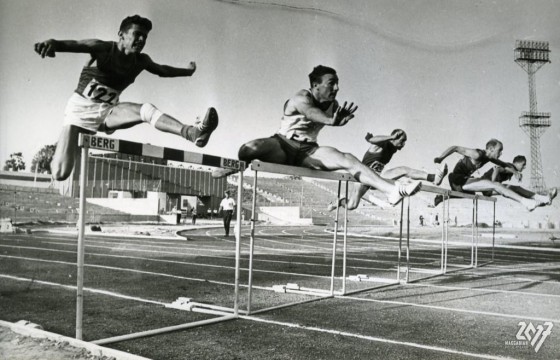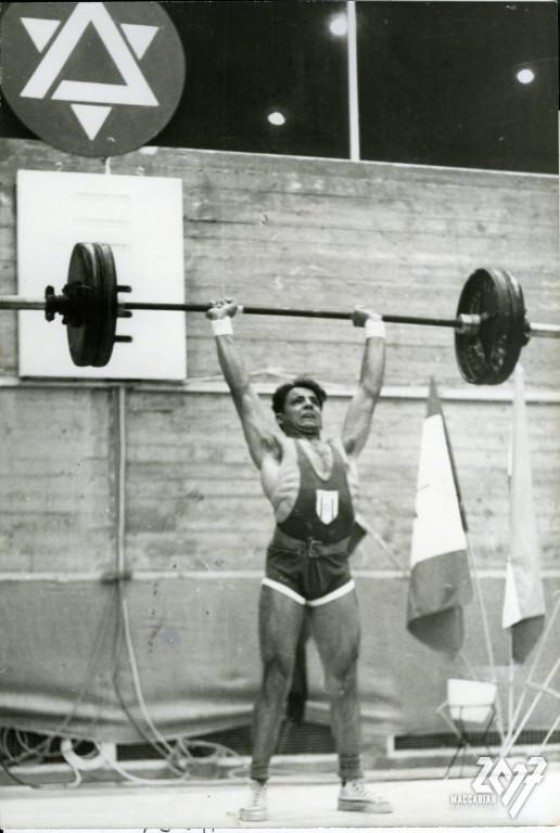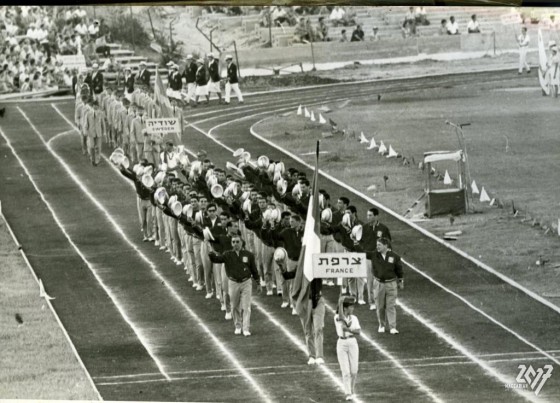
The Seventh Maccabiah: 5725
With 1,200 athletes from 25 countries participating, the Seventh Maccabiah attained the highest level of achievement of all competitions since WWII. For the first time, delegations arrived from Venezuela and Peru and at the last moment, for the first and last time, Iran. The Turkish delegation, on the other hand, was absent since the Turkish Foreign Ministry refused to grant exit visas to the basketball team.
During this, the Seventh, 22-event Maccabiah, many records set at the Sixth Maccabiah were broken. The United States delegation, 200 strong, was outstanding, particulary in swimming, winning 14 Gold Medals in eighteen races. Israel won three and Australian John Stark, one. Fifteen year old Mark Spitz, appearing for the first time, won four Gold Medals and broke three records. Another outstanding American swimmer was Olympic Silver Medal winner Marilyn Rumnovsky. The South African gymnast, Lorraine Lutzoff, won three Gold Medals and Chana Shazifi, nee Tzadik, later one of Israels great athletes, won the 800 meter run. Promising basketball player, 22-year old Tal Brody, played for the US team. Only when he returned to the United States did he abandon his amateur status to play for Baltimore.
By order of the Israeli Defense Forces, a synagogue was set up in Kfar Maccabiah for the athletes. Ramat Gan Stadium was enlarged to seat 53,000 spectators. Hundreds of thousands of square meters of earth were moved to build huge embankments and dig tunnels. The most highly perfected athlete track was dedicated. The dressing rooms were also enlarged and renovated. Huge parking lots were prepared alongside the stadium, and, at the very last minute Galit Pool behind the basketball stadium in Yad Eliahu was readied for the competitions.
Baseketball games were held on six courts, mainly in Yad Eliahu Stadium. Soccer competitions took place in five different cities. Judo and boxing were held in rings set up on the modern basketball courts. This time, the 8 indoor sports events were held on the fair grounds. The first Israeli shooting range and alleys which met international standards were built in Ramat Gan. The judo matches were among the main attractions. Thirteen countries entered, in contrast to previous Maccabiot, when the turnout was so small that matches were held in Army bases. Golf matches and clay pigeon shooting competitions were introduced for the first time at this Maccabiah.
West German television filmed all the performances and competitions and televised them in a special program, ׂThe Jewish Olympics׃ on the main channel. Holland, Belgium, France, Austria and Switzerland acquired television rights. Although the President of Israel, Zalman Shazar, opened the games in the traditional manner, a new element was added to the ceremony. The 12-man Color Guard now consisted of two outstanding athletes from each of the previous Maccabiot. Army parachutists staged festive landings into the stadium grounds. The Closing Ceremony ended with the traditional soccer game, this time between the Israeli all-star team and Torino Italy (2:1). For the first time, however, the athletes marched with comrades in their sport rather than as a nation. Four Kenyan track and field stars, among them the best in the world, were invited to participate in the closing exhibition competitions at the conclusion of the official competitions.
As usual, the Maccabiah organizers were plagued by financial difficulties and institutional indifference. The Israeli government contributed only 8% of the budget, 4,200,000 Israeli pounds, despite the fact that the Maccabiah Games had brought at least 10,000 tourists to Israel. The Jewish Agency, the Jewish National Fund and Keren Hayesod did not contribute at all. That year, in the mid-60's the new Knesset building was completed in Jerusalem and Teddy Kollek was elected mayor of the city.


